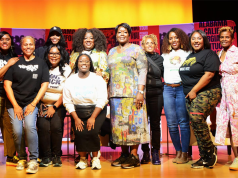By Samuetta Hill Drew
Our safety series on the Reopening of Schools in America has addressed engaging in an age appropriate conversation with your child(ren) about the importance of facial coverings (masks) and hand washing. Understanding the importance of knowing how germs are transmitted from one person to another is crucial for your child(ren). Like the old saying goes, “the parent is a child’s first teacher.” This age-old statement is literally being tested during this pandemic.
Your child(ren)’s health and well-being lie in the hands of each parent, especially during this COVID-19 crisis. The intent of a “real talk” conversation is not meant to scare them, rather to inform them. The information you provide should be clear and straight forward. It should be based upon scientific facts versus the opinions of cable pundits or politicians.
Therefore, there is a third topic in this trilogy of school safety measures which should be added to the discussion. This third topic is centered around the importance of practicing social distancing and what it looks like.
Depending upon the age of your child(ren), you may need to role play what social distancing looks like. A visual often helps them better understand how to implement this safety measure.
When talking with your child(ren) about the importance of social distancing they may have some questions. This is understandable. They may ask what would happen if they or a friend gets the coronavirus. They may also inquire about when they will be able to see an at-risk love one such as a grandparent, aunt, uncle, etc. Remember, as the adult, that avoiding a question or hiding what is going on in the world does not shelter your child, but may give a child more anxiety.
A young child may ask a question such as why he/she cannot have a birthday party this year? Make sure you respond honestly while reassuring them – for an example they will turn five years old despite not having a birthday party filled with family and their friends. Let them know you still have plans to have a fun celebration on their birthday even though it will be at home. You may even ask them to help you plan the at home birthday celebration.
When talking with older children and teenagers you may wish to discuss social distancing from a health perspective. They probably will not be happy, but explain that social distancing does not mean losing connection with friends. It means connecting with their friends differently.
When engaging in conversation with your child(ren) on either of the three topics – facial coverings, hand washing, and/or social distancing, it is important you listen and respond to your child(ren)’s feelings. It is normal and maybe even expected for children to be unhappy about social distancing. If they share their unhappiness about not being able to see family or friends, empathize with them. Let them know social distancing is difficult for everyone, including adults. Then follow up with a discussion on alternative ways to remain in contact with the family members and/or friends such as a virtual play-date, etc.
This is a time for creative solutions so you can help your child(ren) Keep an Eye on Safety. Note many school districts and/or individual schools have put certain safety measures in place to encourage and enforce social distancing.




